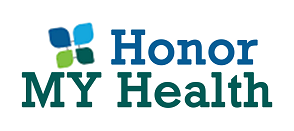
Just about fifty years prior, states all over the planet embraced the 1961 Single Convention on Narcotic Drugs, which, as well as tending to the control of illegal opiates, committed nations to pursuing all-inclusive admittance to the opiate drugs important to mitigating pain and languishing. However, regardless of the presence of cheap and viable pain management prescriptions, a huge number of individuals all over the planet keep on experiencing moderate to extreme pain every year without treatment.
Critical barriers to viable pain management and treatment include the failure of numerous legislatures to set up working medication supply frameworks; the inability to order approaches on pain treatment and palliative consideration; the inadequate preparation of medical service laborers; the presence of excessively prohibitive medication control guidelines and practices; medical care laborers’ fear of lawful authorizations for authentic clinical practice; and the swopping of medical care laborers. These hindrances can be perceived not just as an inability to give fundamental medications and mitigate enduring, but additionally as denials of basic freedoms.
As indicated by global common freedom regulation, nations need to give pain management and treatment prescriptions as a feature of their center commitments under the right to wellbeing. Inability to find sensible ways to guarantee that individuals who endure pain receive sufficient pain treatment might bring about the infringement of the commitment to safeguard against horrible, barbaric, and debasing treatment.
Persistent pain is one of the main sources of torment and body agony around the world and is a typical indication of both disease and HIV/AIDS. Up to 70% of disease patients experience the ill effects of pain, and among people living with HIV/AIDS, wide gauges of pain predominance at all phases of contamination have been accounted for. While pain predominance has decreased among people, concentrations keep on recording the under-acknowledgment and under-treatment of pain, even among people being treated for HIV contamination. Pain treatment is likewise connected with orientation, as HIV-contaminated women with pain are twice as likely to be under-treated as their male partners.
Pain significantly affects personal satisfaction and can have physical, mental, and social outcomes. It can prompt diminished portability and a resulting loss of solidarity, compromise the resistant framework, and obstruct an individual’s capacity to eat, concentrate, rest, or connect with others. A World Health Organization (WHO) investigation discovered that individuals who live with persistent pain are more likely to experience the ill effects of sorrow or nervousness multiple times. The physical and mental impacts of constant pain alter the course of infection. Continuous pain can, in such a way, impact infection results by decreasing treatment adherence.

